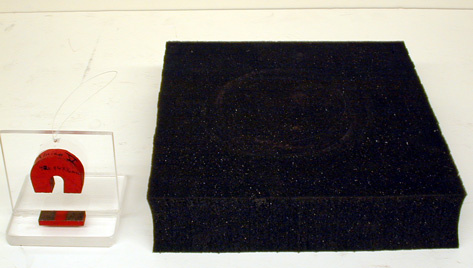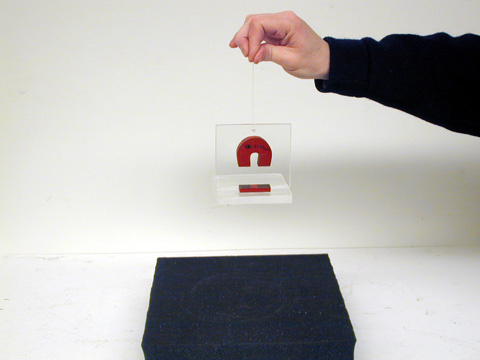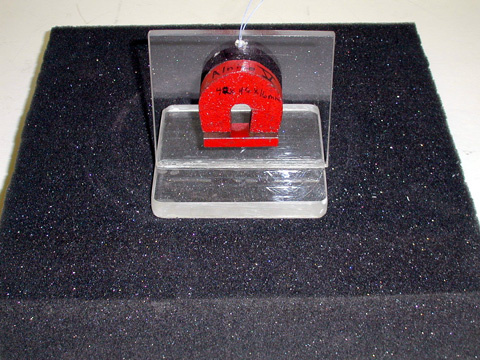Breadcrumb
1G20.50 - Magnet & Keeper

|

|

|
Code Number: 1G20.50
Demo Title: Magnet & Keeper
Condition: Good
Principle: Freefall
Area of Study: Mechanics
Equipment:
Magnet glued to Plexiglass holder, keeper, foam pad.
Procedure:
Show that the keeper will be attracted to the magnet if brought close enough. Then, lay the keeper on the bottom ledge of the Plexiglass. Hold about two feet above the foam pad and drop. You can hear the keeper click against the magnet when the gravitational pull no longer acts on the keeper during free-fall.
References:
- Heladio Ayala, Josip Slisko, Adrian Corona, "Magnetic Demonstration of Weightlessness: A Spark of Student Creativity", TPT, Vol. 49, # 8, Nov. 2011, p. 524.
- John D. McGervey, "Hands-on Physics for Less Than a Dollar per Hand", TPT, Vol. 33, # 4, Apr. 1995, p. 238 - 241.
- Ivana M. Krulj and Josip Slisko, "Absence of buoyant force in free fall: A magnetic demonstration", TPT, Vol. 61, #4, Apr. 2023, p. 312.